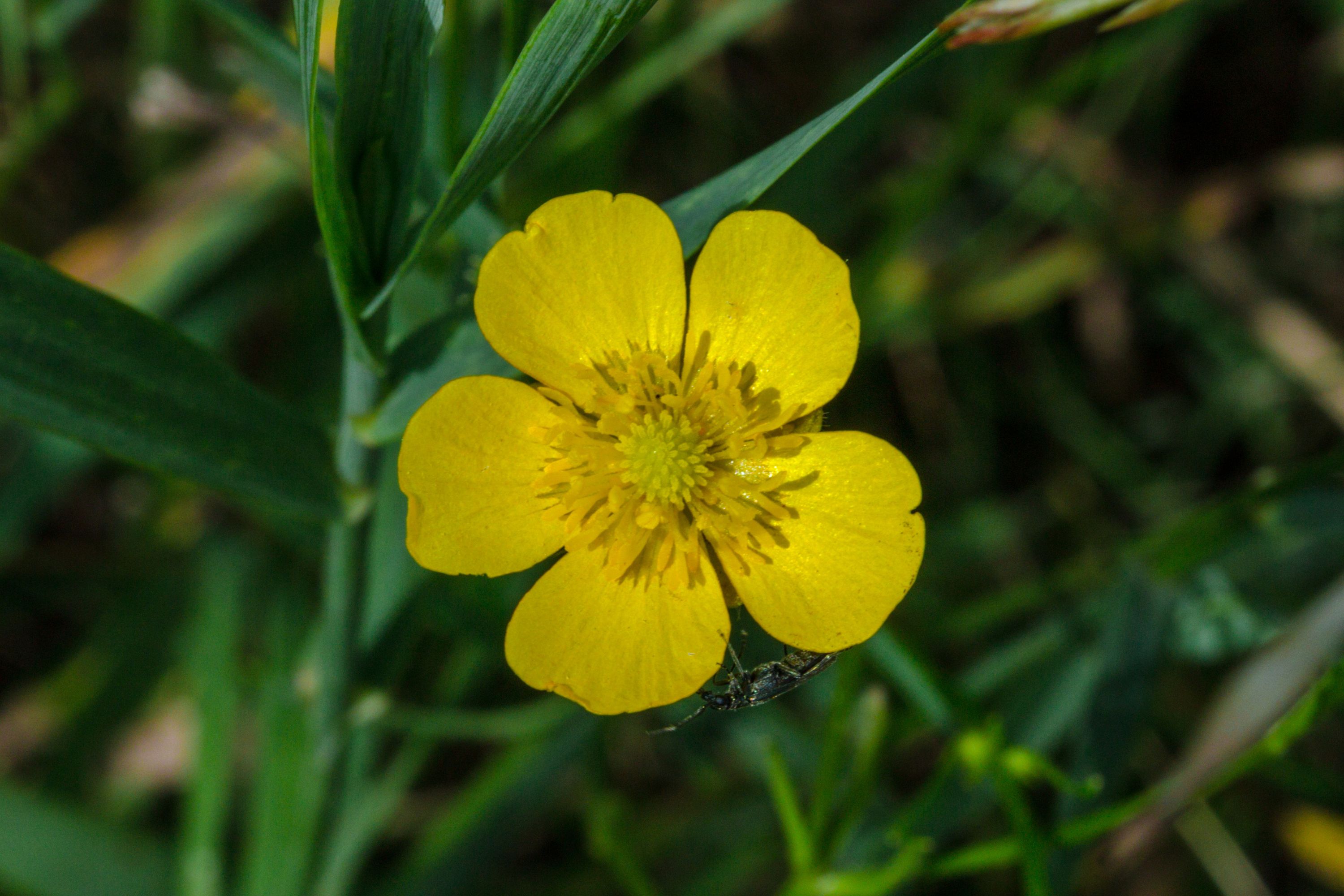Meadow buttercup
(Ranunculus acris)

Description
“Pet poisonous” – Toxic parts: entire plant esp. leaves Ranunculus acris, commonly known as meadow buttercup, is a perennial herbaceous plant native to Europe, Asia, and North Africa. It belongs to the Ranunculaceae family, which includes more than 2,500 species of flowering plants. Meadow buttercup is widely cultivated for its bright yellow flowers and is often used in traditional medicine and herbal remedies. In this article, we will explore the botany, ecology, cultivation, and medicinal uses of Ranunculus acris. Botany and Morphology Meadow buttercup is a herbaceous perennial that can grow up to 90 cm in height. It has a fibrous root system and a basal rosette of leaves that are deeply divided into three-lobed leaflets. The stem is erect and branching, and the leaves become progressively smaller as they ascend the stem. The plant blooms from May to August, producing bright yellow flowers that are about 2.5 cm in diameter. Each flower has five petals, which are glossy and delicately veined. The stamens are numerous, and the central carpels develop into a head of achenes (dry, single-seeded fruit). Ecology and Distribution Meadow buttercup is a common wildflower found in meadows, pastures, and along roadsides in Europe, Asia, and North Africa. It is adapted to a range of soil types but prefers moist, well-drained soils. The plant can grow in full sun or partial shade and can tolerate moderate levels of pollution. It is also tolerant of cold temperatures and can survive harsh winter conditions. Cultivation and Propagation Meadow buttercup is a popular garden plant because of its bright yellow flowers, ease of cultivation, and adaptability to different growing conditions. It can be propagated by seed, division of established plants, or stem cuttings. Seeds should be sown in the spring or fall, either directly into the soil or in seed trays. The soil should be moist and well-drained, and the seeds should be covered lightly with soil. Germination usually takes two to three weeks, and the seedlings should be thinned out to about 15 cm apart. Established plants can be divided in the spring or fall. The plant should be dug up and the root system carefully separated into smaller sections, each with its own stem and leaves. These can be replanted immediately in a new location or potted up and grown on until the roots have established. Stem cuttings can be taken in the summer or early fall. The stem should be cut just below a node and planted in moist, well-drained soil. The cutting should be kept moist and out of direct sunlight until roots have formed. Medicinal Uses Meadow buttercup has been used in traditional medicine for its anti-inflammatory, analgesic, and diuretic properties. The plant contains several biologically active compounds, including protoanemonin, ranunculin, saponins, and flavonoids. Protoanemonin is a toxic compound that is present in the fresh plant, but it is broken down into harmless compounds when the plant is dried or boiled. Meadow buttercup has been used to treat a variety of ailments, including arthritis, rheumatism, gout, and skin conditions such as eczema and dermatitis. It has also been used as a diuretic to relieve water retention and edema. The plant has a long history of use in traditional medicine, but it should be used with caution as it can be toxic in large amounts. Conclusion Ranunculus acris, or meadow buttercup, is a beautiful and adaptable perennial herb that is widely cultivated for its bright yellow flowers.
Taxonomic tree:







